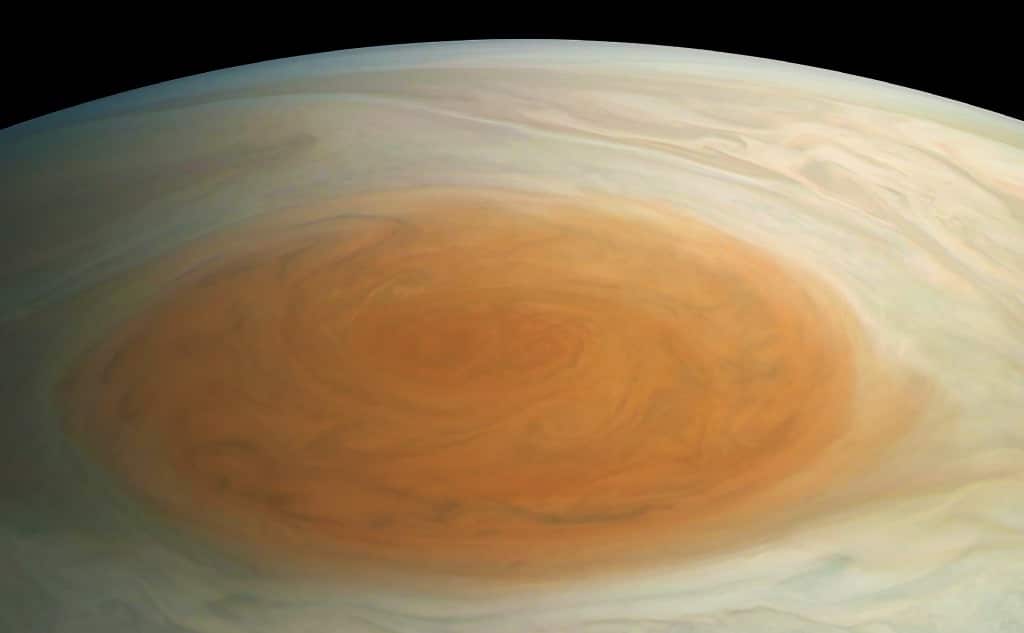This is about the Jupiter’s Great Red Spot.
Jupiter’s Great Red Spot shrinks, but there’s still plenty to learn from it.
If you want to learn more about Jupiter’s Great Red Spot, you’ve come to the right place.
Let’s jump right in!
Jupiter’s Great Red Spot Is Extremely Hot
Due to its far distance from our Sun, gas giant Jupiter should rightfully yield drastically cooler temperatures.
But, a new study published in Nature shows that Jupiter’s Great Red Spot temperature is extremely hot.
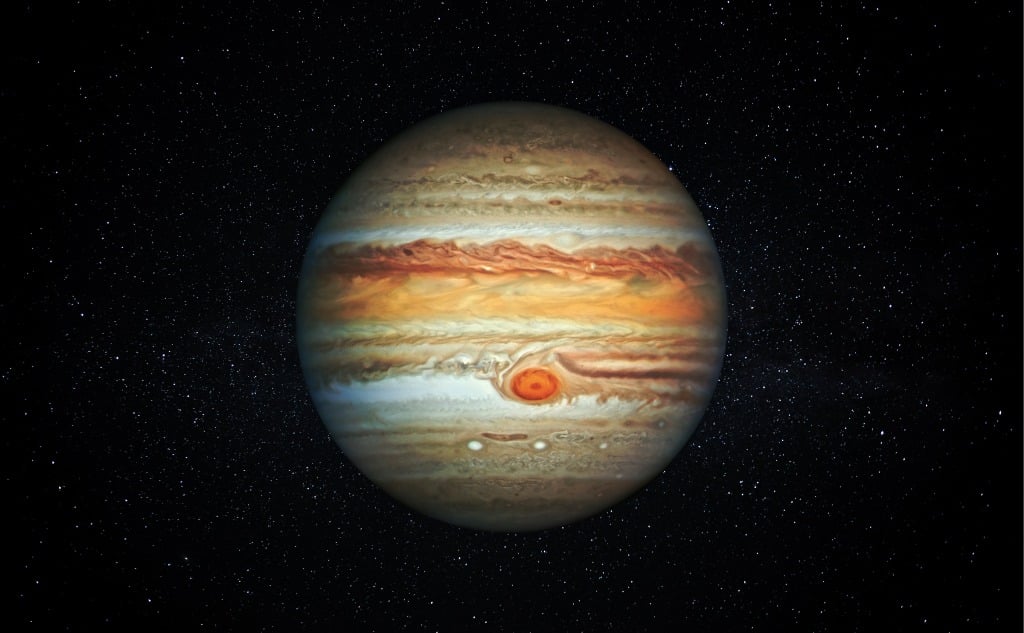
In fact, they are hundreds of degrees hotter than anywhere else on the planet.
The mysterious storm, waging on for over 300 years, has puzzled astronomers for decades.
The recent findings hope to shed new light on this vexing weather phenomenon.
The Search for Great Red Spot Temperature Causes
Jupiter’s polar auroras generate strong electricity capable of heating the planet’s atmosphere.

However, scientists believe this generated heat should primarily stay confined to the upper and lower latitudes.
Ultimately, with its rapid speeds, Jupiter’s atmosphere itself may be a culprit for elevated temperatures.
Specifically, the atmosphere surrounding the infamous Great Red Spot.
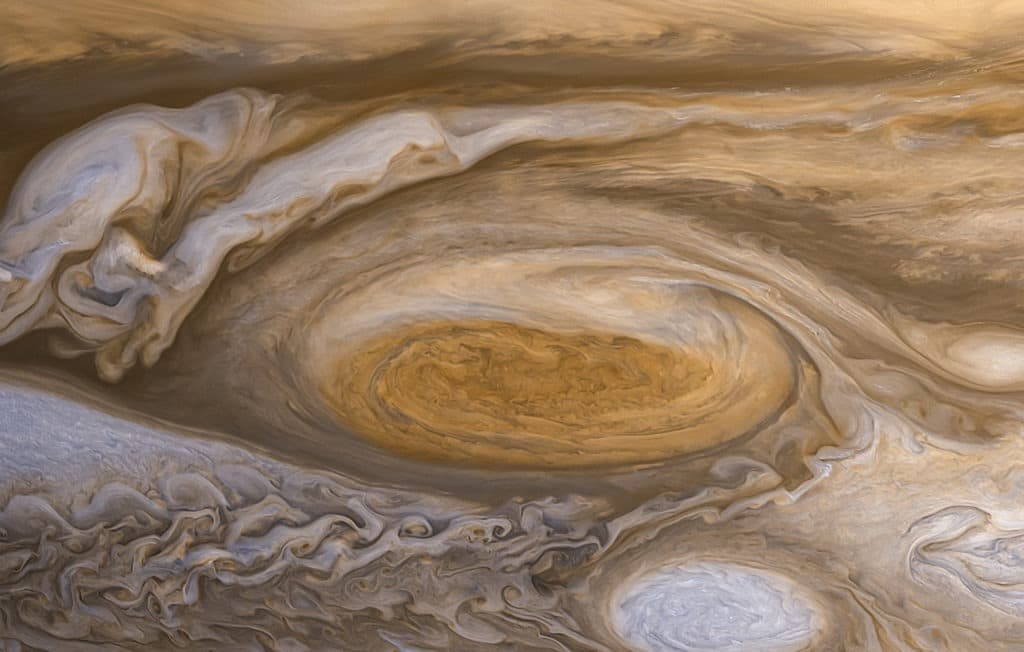
First, the storm swirls at astonishing speeds, whirling atmospheric gases around, creating gravity waves.
The waves continue upward, colliding hundreds of miles above the Jovian atmosphere, releasing tremendous energy when they crash.
Observing Jupiter’s Great Red Spot
Planetary scientist at Boston University, James O’Donoghue, led the study. O’Donoghue used the NASA 3-meter infrared telescope in Hawaii’s Mauna Kea Observatory to monitor above and around Jupiter’s Great Red Spot.
His findings indicated no other heat source in the area, leading him to conclusively believe the heat is coming from within or beneath the Red Spot.
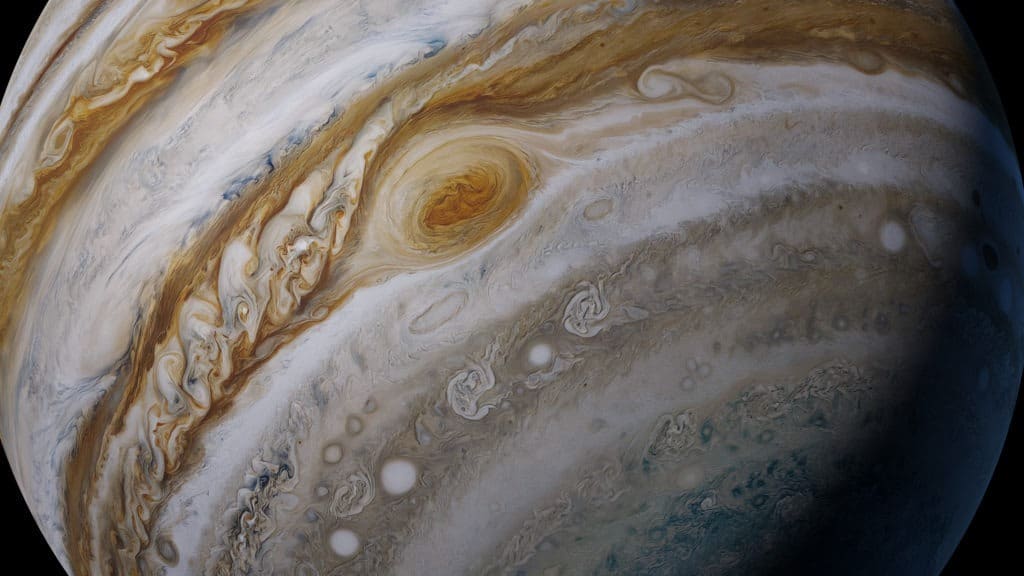
O’Donoghue was able to search for a specific molecule found in all gas giant planet’s atmospheres.
The molecule, H3+, can be examined and used as a tool for scientists to determine temperatures. This is how the team determined the temperature differences in the Great Red Spot and the rest of the planet.
Unexpected Findings on Jupiter
Ultimately, O’Donoghue also stumbled on more than simply temperature information in his study.
Suppose Jupiter’s heat is coming from below the Great Red Spot. In that case, this demonstrates that different levels of Jupiter’s atmosphere affect each other. No other previous study has generated evidence of this.
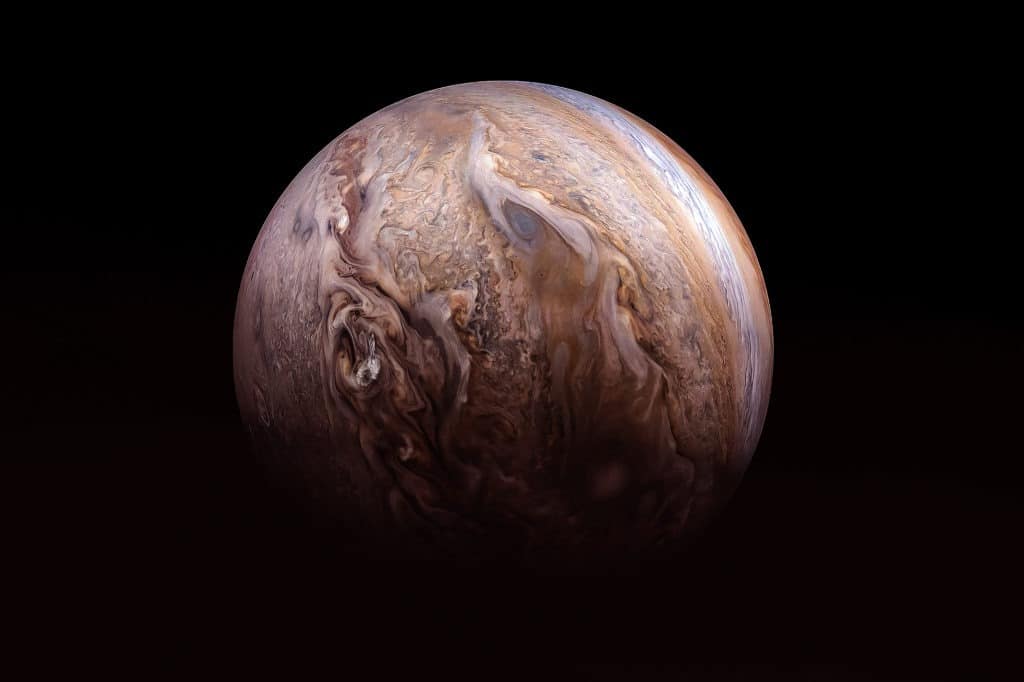
Meanwhile, other recent studies have shown Jupiter’s Great Red Spot to be slowly decreasing in size. This poses a serious concern for O’Donoghue and other scientists. “I hope it doesn’t shrink too much so we can’t understand it before it goes, because that would be a shame,” says O’Donoghue.
Given the longevity of the puzzling storm, it’s safe to say it will not likely disappear any time in the very near future.
As a key player in the formation of our solar system, Jupiter remains rather mysterious.
Yet, with the scientific attention, it is receiving this year, astronomers hope to unlock a wealth of answers and information.
